Bespoken Word: Fanning the flames
Guy Kesteven considers the pros and cons of the fan-tastically accessible sport of cycling
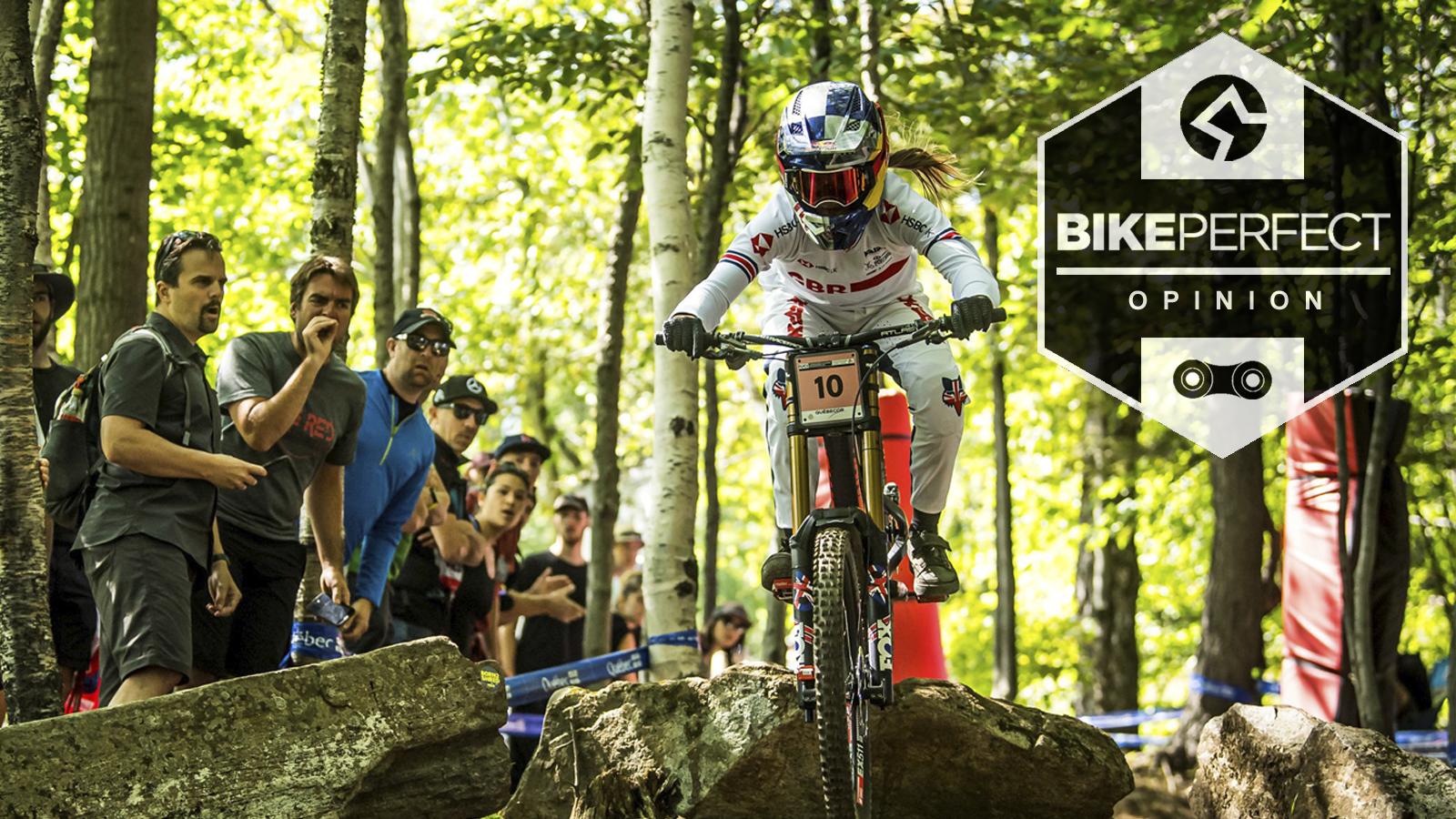
Obviously we’re living in weird times right now, but if you’ve ever raced an event you’ll know how much spectators can lift your mood and enrich the experience.
The level I’ve raced at means I’ve only ever been at events where you could count the folk cheering in tens, rather than hundreds, but even then it makes a massive difference. There’s banter as you nose into a gnarly section on an Enduro, goading you to take the techy glory line and waiting to cheer if you clean it or jeer if you opt for the chicken run. That handful of people waiting at a gate high on a moor during a marathon with an encouraging word, somehow relaxes the cramp and relieves the misery for a few moments. Just sharing a nod or a shiver with marshals or resting racers huddled round fires in the cold early hours of a 24-hour event, provides the highlight of an otherwise lonely lap.
- Cross-country mountain biking: everything you need to know
- Trail mountain biking: everything you need to know
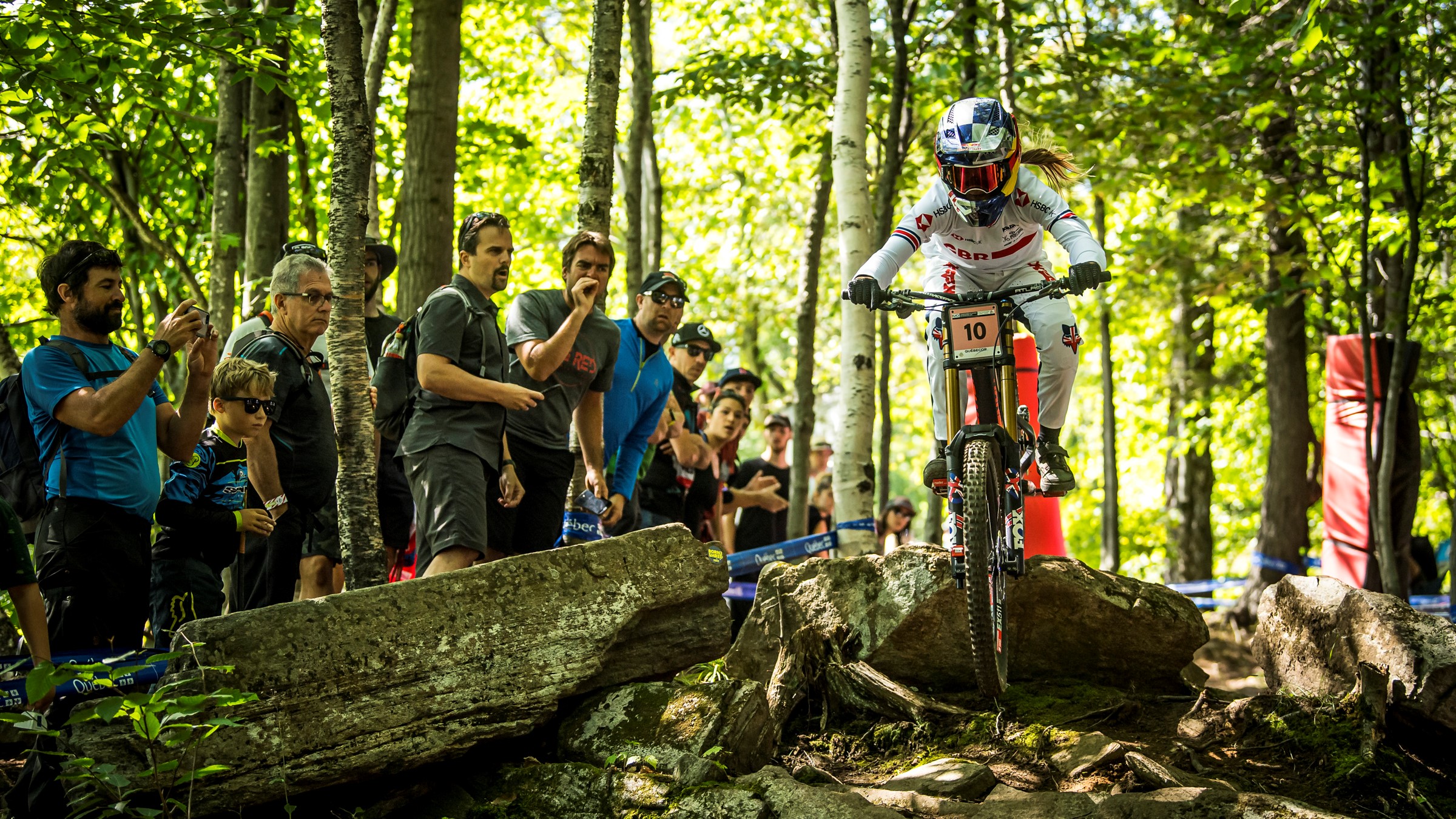
There was the one time when I finished well up in the mix of a proper event with announcers, hoardings, and a proper hammering of hands on banners as we lit up a sprint down the finishing straight. I say ‘we’ as it was a charity Sportive where I’d teamed up with Paralympic World Champion, Olympic Gold medallist and multiple World Record holder Steve Bate MBE as guest pilot on his tandem. Which also explains why - for once - I was almost first home (we got lost twice) rather than rolling in when they were wrapping up the course tape.
But being on the receiving end of a fraction of that clamor and excitement was a real insight into how incredible it must be for ‘real’ racers. Whether that’s downhillers charging into the deafening chanting and chainsaw revving arena of Fort William, or Tour De France climbers praying that the dense crowds just ahead of them unzip fast enough to let them through, the intensity of the atmosphere must be incredible. It’s no wonder you’ll often hear post-race interviews where a rider claims they were carried to superhuman efforts by the crowd.
Being part of those crowds is incredible, too. Watching the Tour De Yorkshire, Tour De France and then the World Championships play out on my local roads was incredible. Pavements filled, balconies bursting and photographers — pro and amateur — hanging off lampposts to try and get a shot. Standing roadside and feeling the wind of the peloton as the best riders in the world fly past within touching distance. It’s the same when I’ve watched World Cup MTB races or witnessed the hysterically hyped craziness of when Lance Armstrong raced the Celebrity Deathmatch circus of the Las Vegas Interbike ‘cross race.
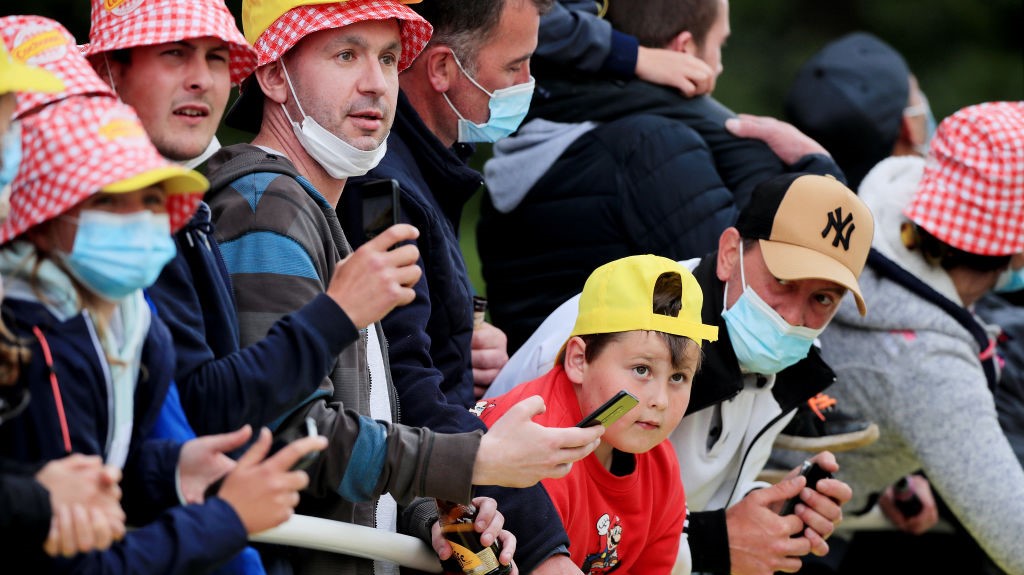
To be among those baying crowds, to see right into the riders’ eyes, watch them at the ragged edge of control and hear their rasping gasps of breath is not just incredible, but a genuine honor to be part of. It’s a privilege our sport shares with very few others that aren’t caged behind fences or watching distant ants or toy cars from stadiums where the best hope of connection is through giant TV screens of curated content — the same as you would get at home or down the pub.
Whether you’re a spectator or part of the spectacle, that’s obviously been massively missed recently. Watching the World Cyclo-cross series this winter was very weird. With just a few mechanics and team personnel, other racers waiting to line up or cooling down, and a few locals who’d managed to sneak in, you suddenly realized that it was no different to the average UK race. Without the crazy Belgian and Dutch fans burying the course and drowning out the commentary, they were just racing around another dismal park next to an industrial estate on the other side of the channel. The European MTB champs were the same, and apart from a few police and photographers, so were the few World Cup MTB and Classics road races that managed to run in 2020. You could see the effect on the racers, too. Finish line salutes looked awkward and hesitant in front of a handful of spectators, most of whom were from other teams who’d rather have seen their riders winning. Time and again post-race interviews lamented the missing noise and excitement, how the lack of human shields even left them exposed to the weather and the way victories felt devalued.
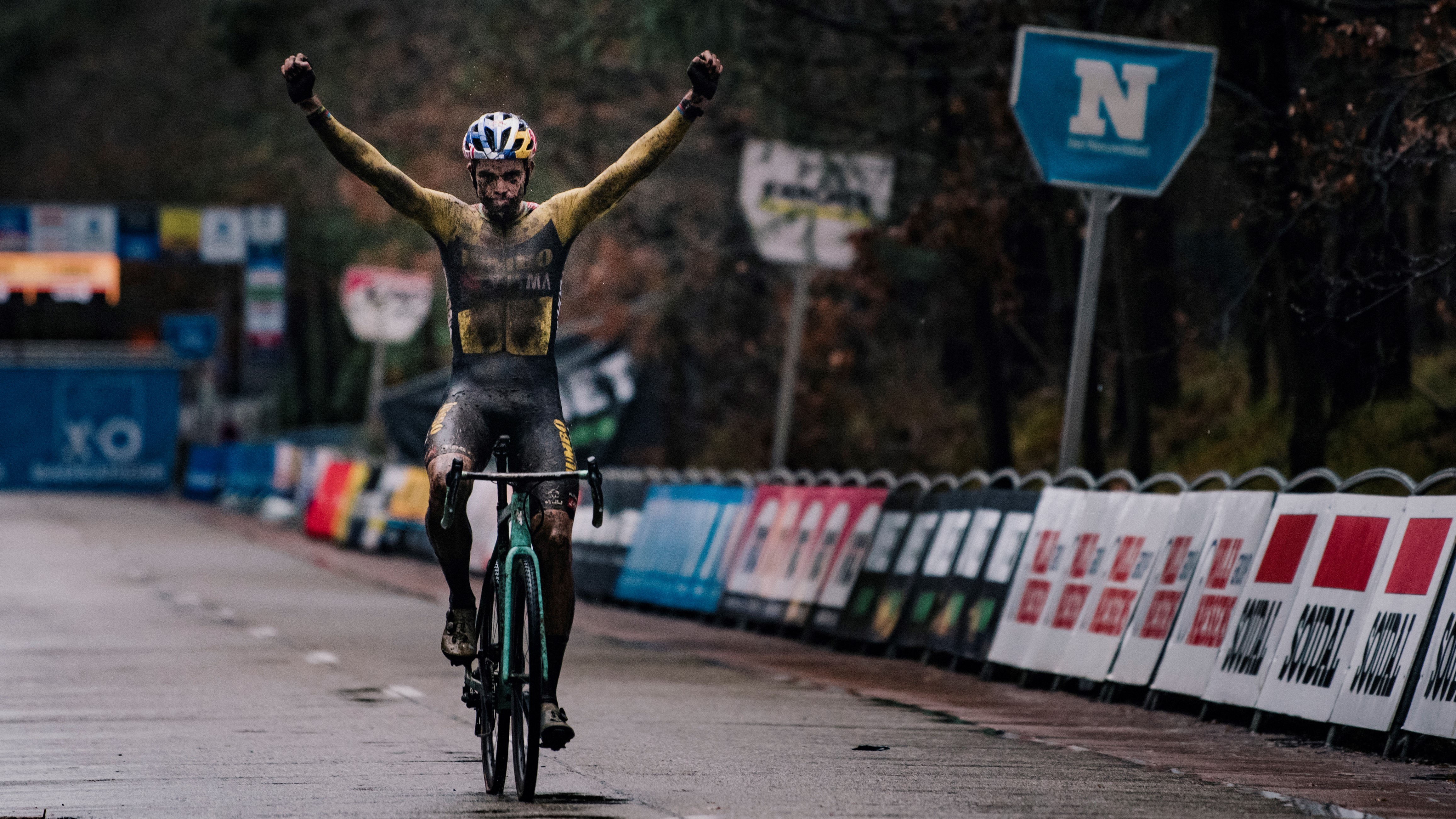
- Types of mountain bikes: all the different mountain bike categories explained
- Best enduro mountain bike: carbon and alloy enduro bikes for all skill sets
Watching the crowds gradually creeping back has been overwhelmingly positive. From the early days when we’d scowl and scold if we saw any spectators pulling down masks to shout at passing riders or even standing next to each other, to watching as more people were allowed — or often more accurately less were shooed away — the sidelines started to become less sparsely populated and finish lines looked worthwhile to sprint for.
But unfortunately with the return of fans comes the return of the problems they cause. Even if you don’t follow road racing you’ve almost certainly seen almost the entire Tour De France peloton taken out by someone determined to show a cardboard sign to the TV cameras. That’s just the latest in a catalog of collisions between racers and idiots running alongside them, or even policemen stepping out to take pictures of sprinters.
Sometimes it’s not racers but races that have been ruined by ‘fans’: spectators have refused to move from places marshalls have told them are too dangerous and then sued the marshalls and race organizers when they got hit by racers. People have sneaked back to ride tracks on private land, ruining carefully negotiated once-a-year access privileges for organizers and putting the whole event in jeopardy. Then there are just idiots leaving gates open, dropping litter, blocking gates with cars, using gardens as toilets and generally making sure the locals never want to see the event — or any others — in their backyard again.
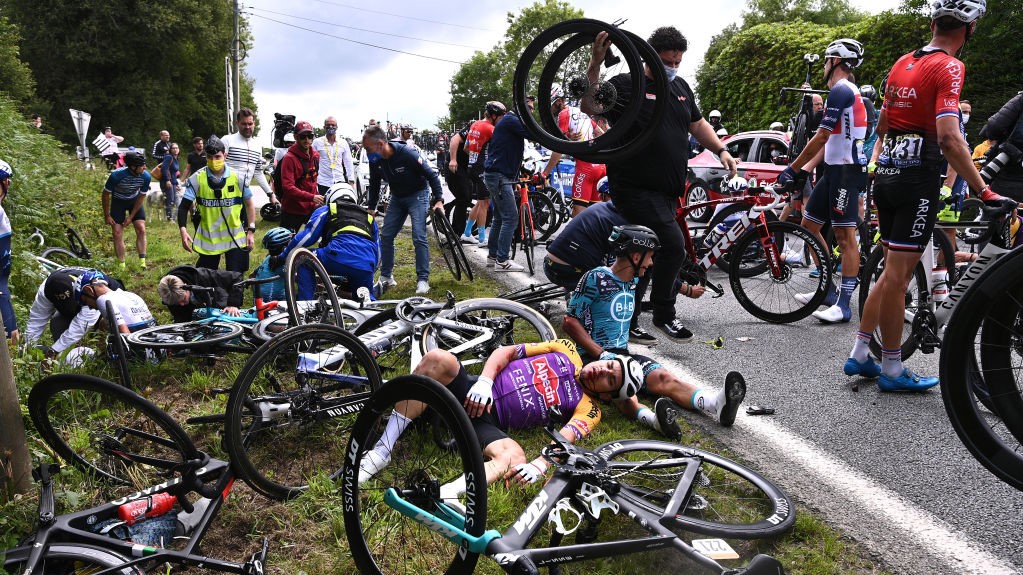
- Best lightweight mountain bikes under 10kg
- Best full-suspension mountain bikes for tackling the toughest cross-country courses
So as French Police hunt for Ms Omi-Opi and riders continue to suffer injuries and miss opportunities because of the public they perform for in such an intimate, literally ‘in your face’ way, we need to realize we have a real responsibility here. Not just to behave well ourselves, but to self-police the situations we’re in, stopping accidents or incidents before they happen. Calling out people for riding trails outside events, picking up litter even if it’s not ours, and giving our heroes the respect and space they deserve. After all, if we’re true fans of the sport we want to see riders and races thrive so we can continue to enjoy the visceral excitement and be welcomed back by communities whether we’re the ones watching or being watched.

Guy Kesteven has been working on Bike Perfect since its launch in 2019. He started writing and testing for bike mags in 1996. Since then he’s written several million words about several thousand test bikes and a ridiculous amount of riding gear. He’s also penned a handful of bike-related books and he reviews MTBs over on YouTube.
Current rides: Cervelo ZFS-5, Specialized Chisel, custom Nicolai enduro tandem, Landescape/Swallow custom gravel tandem
Height: 180cm
Weight: 69kg
